Picture this. You’ve just started your workweek when suddenly you get two Slack messages. The first one is from your boss:
“Send me a meeting invite. We need to talk.”
Meanwhile, the second one is from a different manager:
“What’s your schedule like today? I’d love to chat when you’re free!”
Both of these messages say more or less the same thing. So why is it that only the first one fills you with dread? The answer to that, of course, is tone.
What Is Tone in Writing?
In writing, tone is the implicit emotional message your piece sends to the reader. You can convey different types of tones in writing with your sentence structure, tone words, phrasing, imagery, and more.
According to the Nielsen Norman Group, all different types of tone can be evaluated in four dimensions:
- Formality
- Humor
- Enthusiasm
- Respectfulness
We’ll explore this in greater detail below.
Why It Matters
Tone helps you tell your brand’s story in an impactful way. This can make the reader feel emotionally connected with your brand and even build trust.
In fact, one survey found that more than 65% of respondents felt an emotional connection with at least one brand or business. And over 90% of those connections were positive ones.
Next, let’s explore each dimension of tone in writing and learn how they function.
The Four Dimensions of Tone in Writing (Plus Examples & Tips)
Ultimately, tone should be determined by the needs of your brand, topic, and platform.
We researched this using the SEO Writing Assistant, and found that 75% of the analyzed content used sentences that were too casual for the subject matter. An additional 30% used sentences that were overly formal.
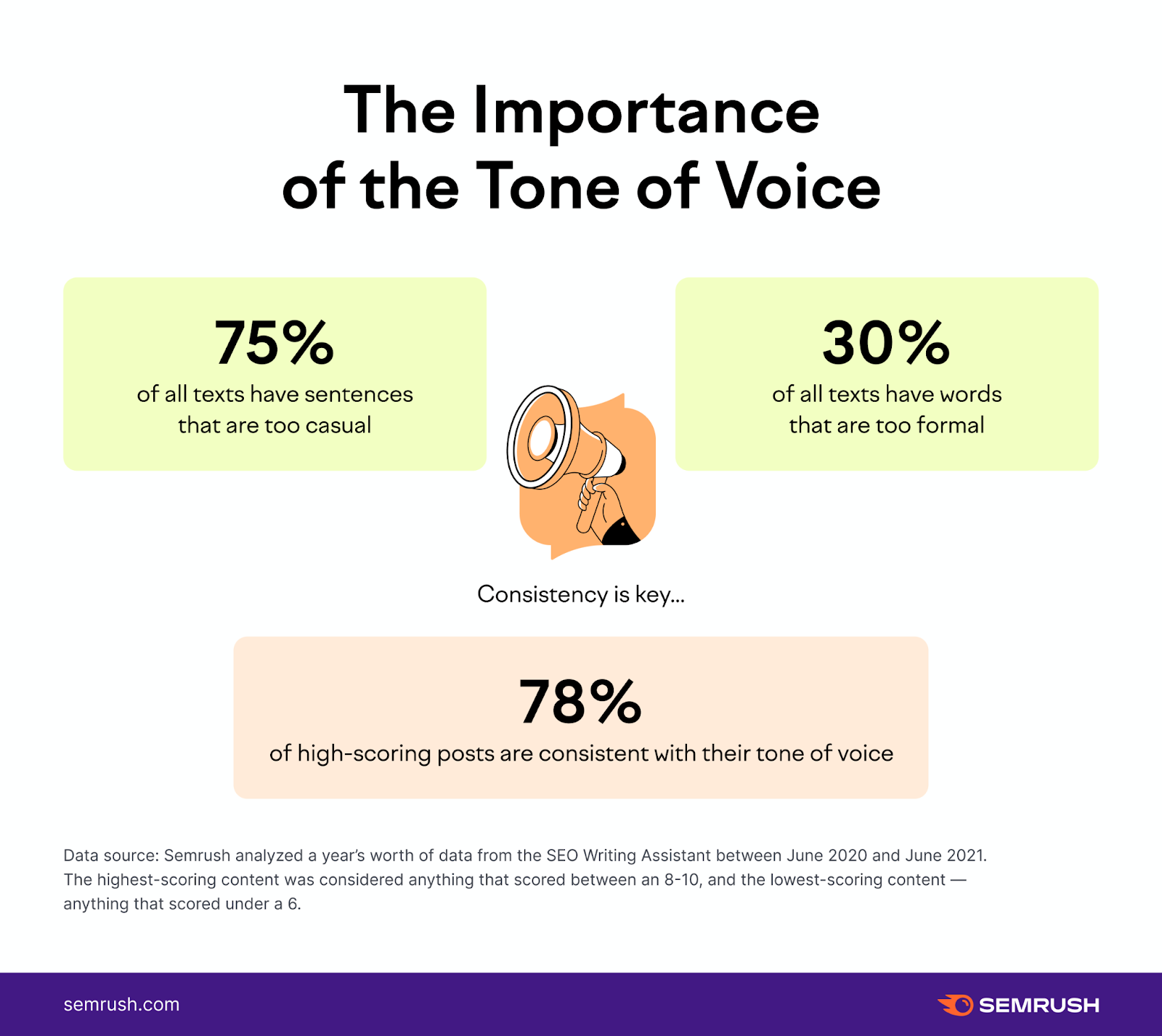
To help you choose the best tone for your piece of writing, we’ll go through each of the four dimensions of tone in detail below.
Formal vs. Informal Writing Tones
The first dimension of writing tone is formality. In other words, how formal or casual is your writing style?
Formal writing tone
Formal tone is typically marked by:
- Very proper grammar
- Longer sentences
- Complex phrasing and word choice
- Little to no contractions or slang
Scientific and technical writing is often extremely formal. It uses complex terms and an impersonal approach to the subject matter to convey authority.
Many non-scientific brands lean into a formal tone because it helps add sophistication to their marketing. Consider this example from Tiffany & Co.:
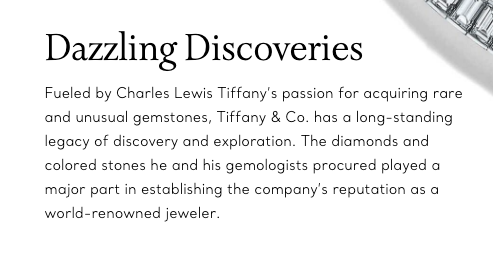
Here, Tiffany’s uses long sentences and complex phrasing and word choice to create a sense of gravitas.
Look at the phrase “the diamonds and colored stones he and his gemologists procured.”
Tiffany’s could have chosen a simpler phrase like “the diamonds and colored stones they found” and said essentially the same thing. Instead, their phrasing emphasizes their expertise and selectivity.
Similarly, Italian fine jewelry designer Bulgari leans into formal tone in their copy:
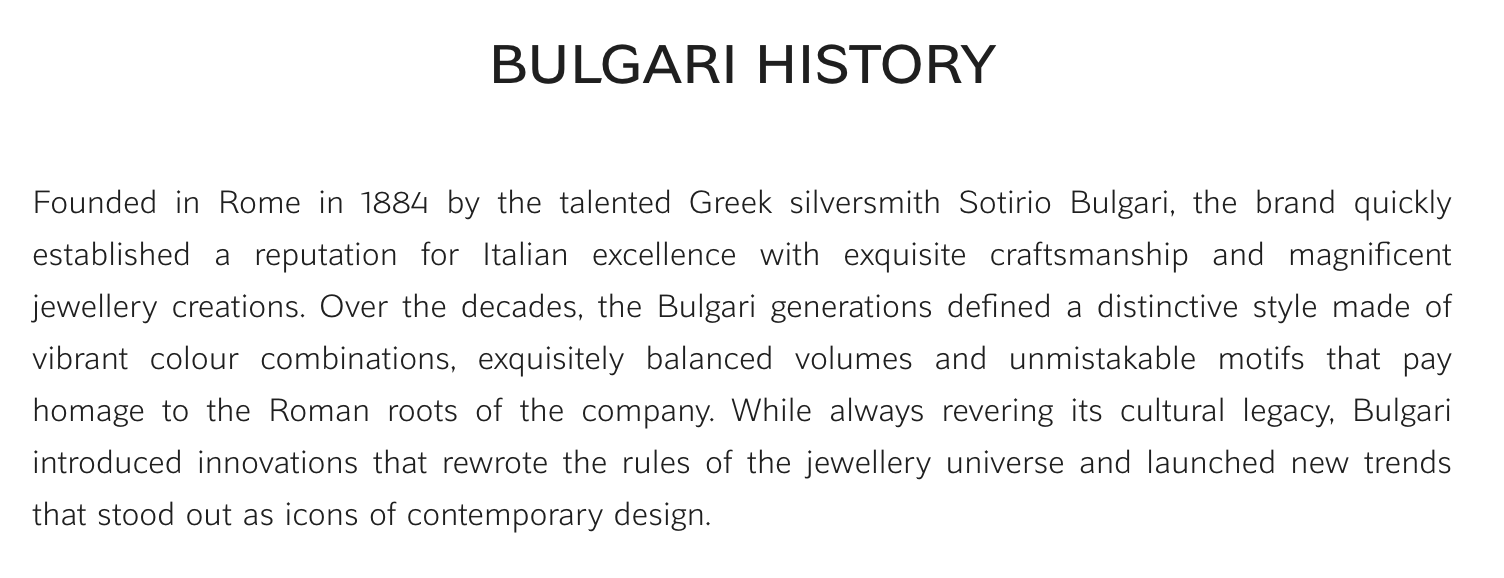
Like Tiffany’s, Bulgari’s formal, elevated style reflects their upscale brand image. With phrases like “a reputation for Italian excellence” and “always revering its cultural legacy,” they establish history, quality, and credibility.
You can use a formal tone to elevate your brand voice and to establish authority in your field.
Informal writing tone
By contrast, an informal tone uses:
- Simpler sentences
- Conversational tone
- Less emphasis on grammar
- Contractions and slang
Here’s an example from the website of Philadelphia’s Steven Singer Jewelers:

Steven Singer’s marketing typically targets men who might not ordinarily feel comfortable in a jewelry store.
Here, they use casual words and phrases like “some guys were flipping burgers” and “average guy.”
This establishes them as relatable, even though they’re establishing credibility at the same time.
Jewelry studio Bing Bang NYC also uses a more casual tone, though with less irreverence:

Bing Bang’s copy uses casual phrasing (“super small” and “a whole lotta heart”), slang, and even emojis to relate to readers. This gives it a strong sense of personality so that it feels inviting and friendly, not austere.
Consider using informal tones if you want to show your personality and relatability.
How to automatically check your tone of voice
Use ContentShake to determine whether your copy uses a consistent and relevant tone of voice.
First, the tool will help you write your article using AI and competitive data suggestions. Then, it'll score your draft based on its readability, SEO, and tone of voice.
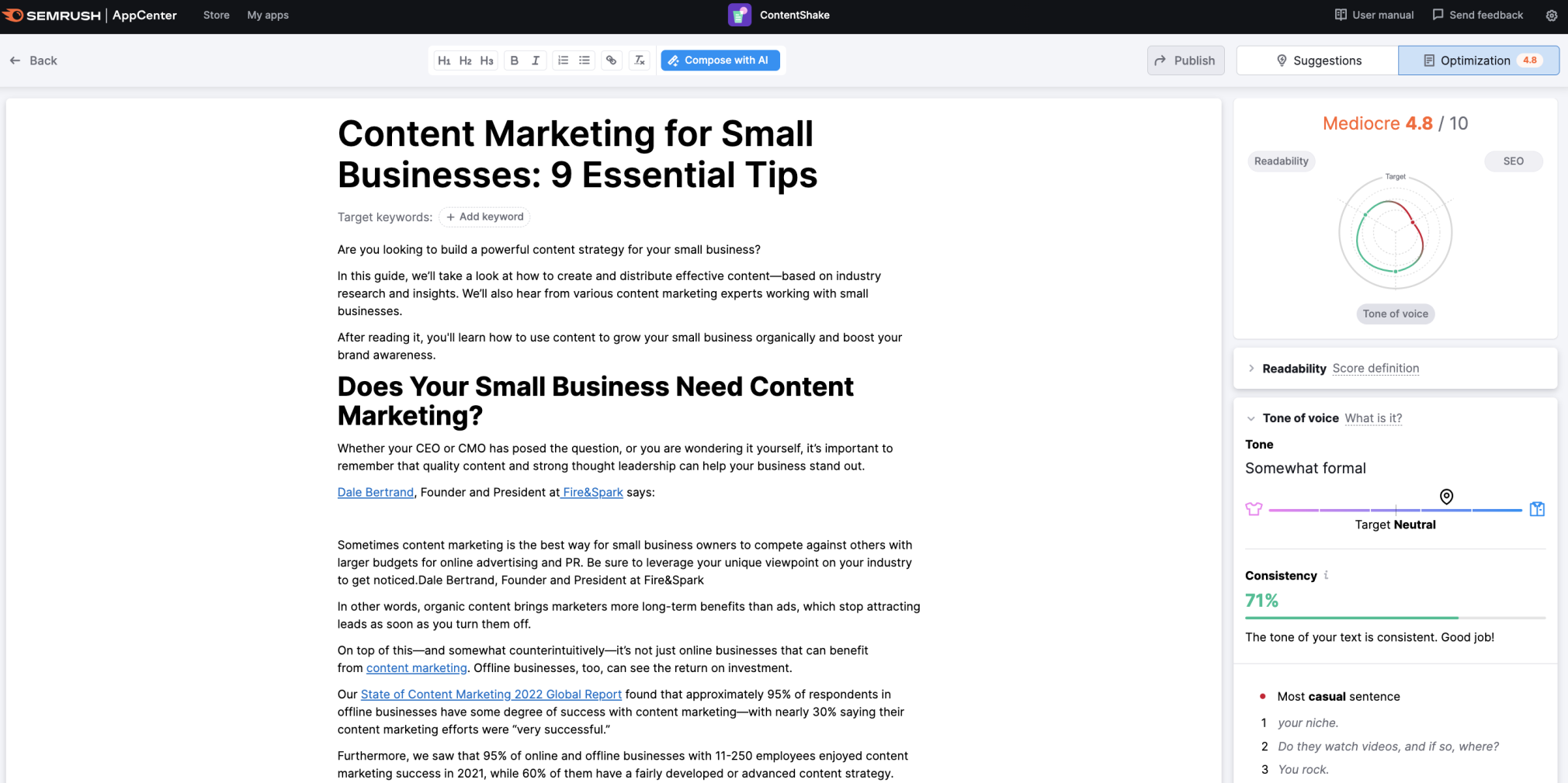
For example, you’ll be able to see which sentences are too formal or too casual and quickly edit them.
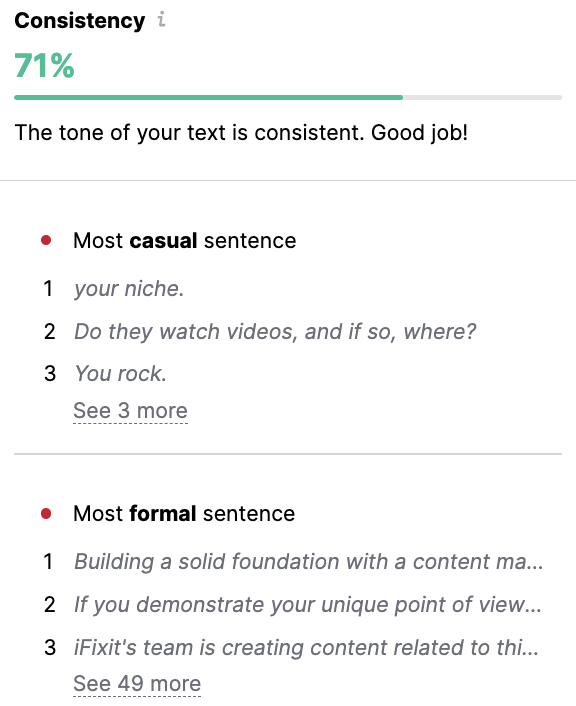
Respectful vs. Irreverent Tone
The second dimension of writing tone is respectfulness.
Respectful writing tone
A respectful tone doesn’t usually stand out on its own. Instead, it quietly informs the way you craft your content.
You can emphasize respectfulness by demonstrating your regard for the reader or customer, being polite, and by emphasizing your core values.
Here’s an example from Harry’s Razors:
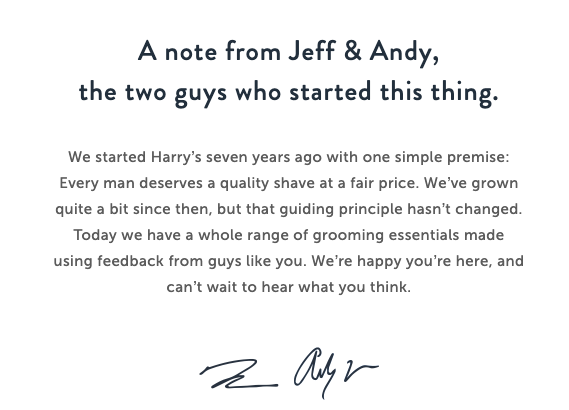
The language in this example is fairly neutral on the surface. The respectfulness in their tone is evident in what they choose to emphasize:
- A sense of equity (“every man deserves a quality shave at a fair price”)
- Their guiding principles
- Their appreciation of customer feedback
Overall, in a relatively short character count, they make it clear that respect for their customers is a major priority.
Similarly, women’s shave and skin care subscription Athena Club maintains a respectful tone:
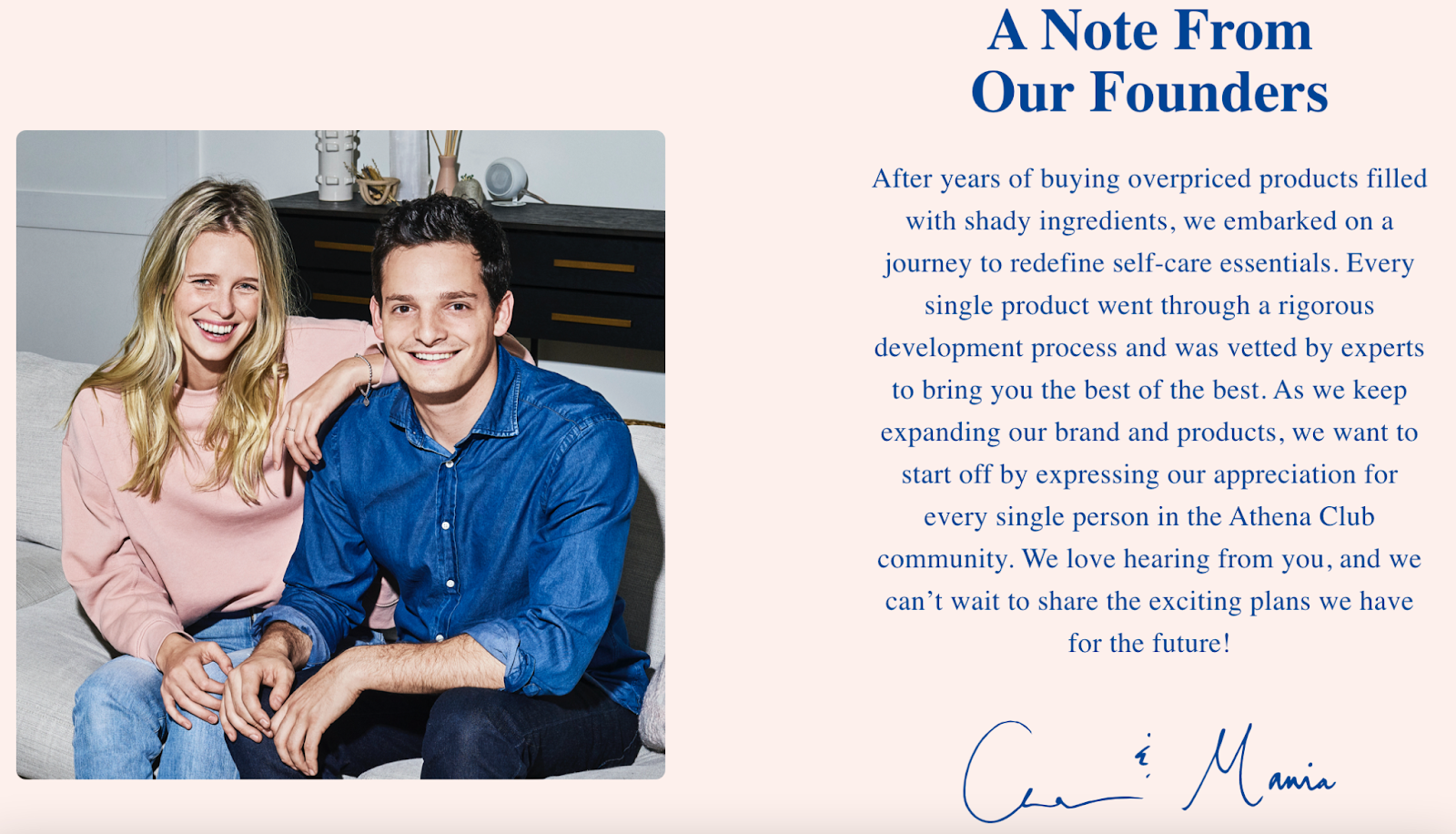
Like Harry’s Razors, Athena Club emphasizes their focus on quality, appreciation for their customer community, and desire for feedback. By including photos and signatures, they establish that they have a personal stake in maintaining these ideals.
A respectful tone can help you emphasize your brand’s values and your care for your customers.
Irreverent writing tone
By contrast, an irreverent tone establishes relatability by showing that they don’t take themselves too seriously. Irreverent copy often uses:
- Slang or even swear words
- Very casual, conversational phrasing
- Humor
For example, here’s how Dollar Shave Club describes themselves:

Dollar Shave Club makes many similar points to Harry’s, but in a different way.
They swear, use casual but enthusiastic descriptors like “awesome,” and even mention their office dog. This creates an impression that they are fun, relatable, and “different” from other brands.
Here’s an example from another brand, Billie:
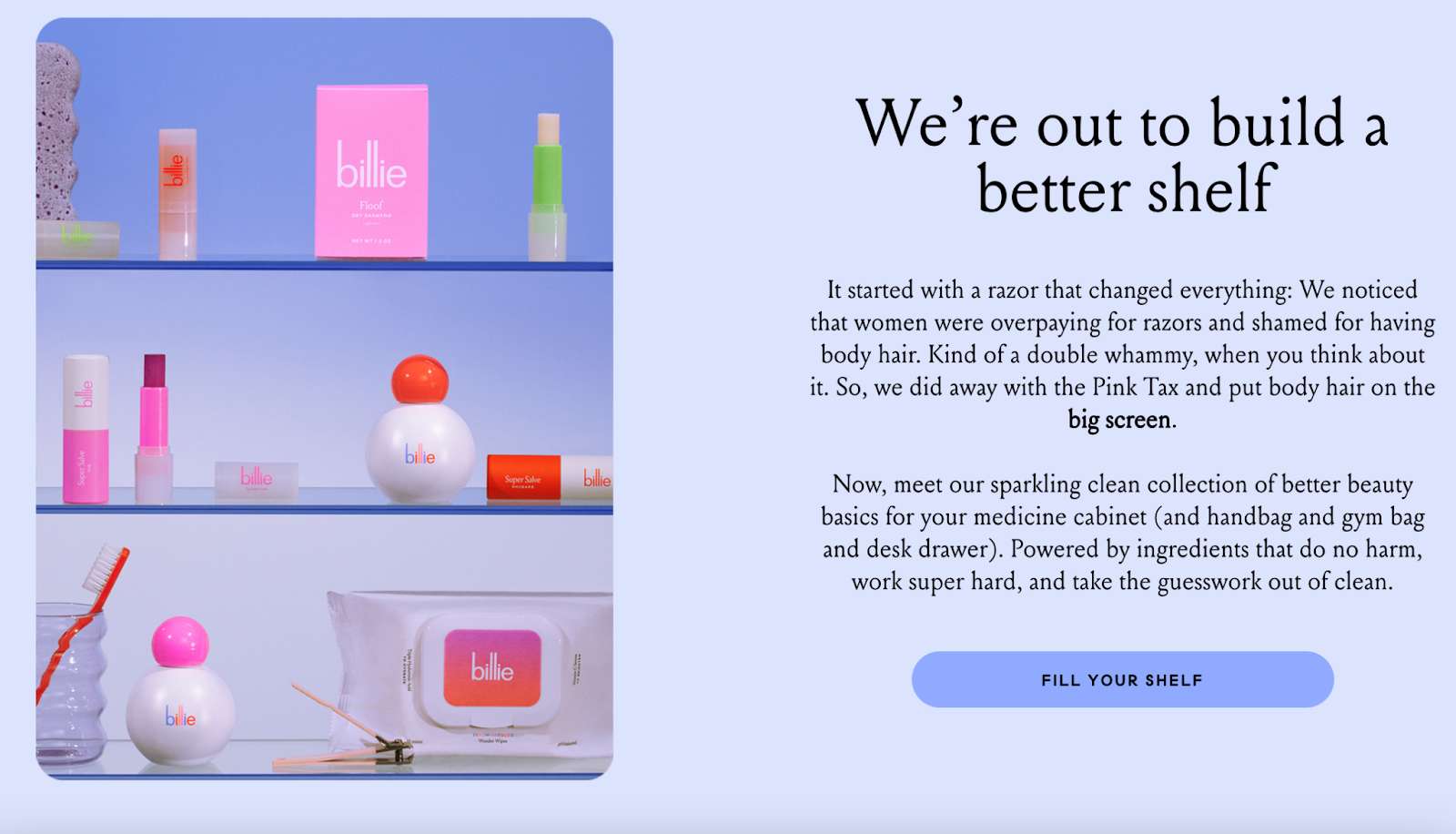
While it’s not quite as irreverent as Dollar Shave Club, Billie crafts their tone in a few ways:
- Bluntly calling out that women were overpaying and being shamed
- Using casual phrases like “kind of a double whammy, when you think about it”
- Maintaining a conversational style
As a result, the point of view feels very close to their target audience—women who shave.
Irreverent tones in writing can help you show your audience that, while you don’t take yourself too seriously, you understand their needs and frustrations.
Humorous vs. Serious Tone
The third dimension of writing tone is humor.
Humorous writing tone
A humorous tone can help your audience feel comfortable, connected, and positive about your brand.
However, it’s also one of the most difficult things to write because it’s so subjective. What has one audience crying tears of laughter might leave another entirely blank-faced.
As such, if you decide to go for a humorous tone, make sure you have a thorough understanding of the audience you’re targeting.
Here’s how men’s grooming brand Old Spice uses humor in their marketing:

Old Spice uses humor to emphasize their masculine image without alienating any of their potential customers by taking themselves too seriously. Remember their iconic “The Man Your Man Could Smell Like” commercials?
Their style of humor is largely dependent on wordplay (like the example above) and absurd overstatement.
Here’s how they captioned the YouTube video for “The Man Your Man Could Smell Like”:

In this example, Old Spice uses humorous overstatement to position their products as an ideal one for an attractive partner to use.
But they do it in such a profound, exaggerated way that the point becomes even more memorable.
Benefit Cosmetics also uses humor in their copy.
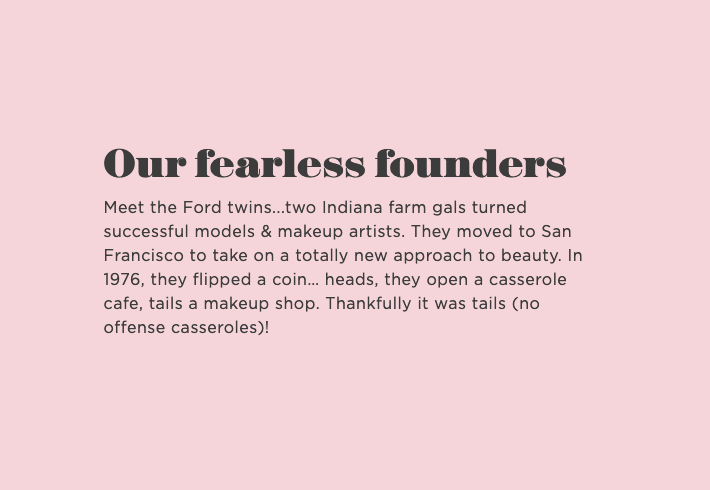
Benefit uses humor to foster a playful personality, showing their customers that they—and therefore their products—are fun and joyful. And because their humor is directed toward themselves, it also shows that they don’t take themselves too seriously.
If you want to add humor to your writing, first think about the types of humor that resonate with your target audience. Then brainstorm ways to instill that humor to show your readers who you really are.
Serious writing tone
In contrast, a serious tone remains grounded. It avoids overstatement and other forms of humor. Typically, serious writing is factual, focused, and direct.
For example, men’s natural skin care brand Oars + Alps uses a serious tone:
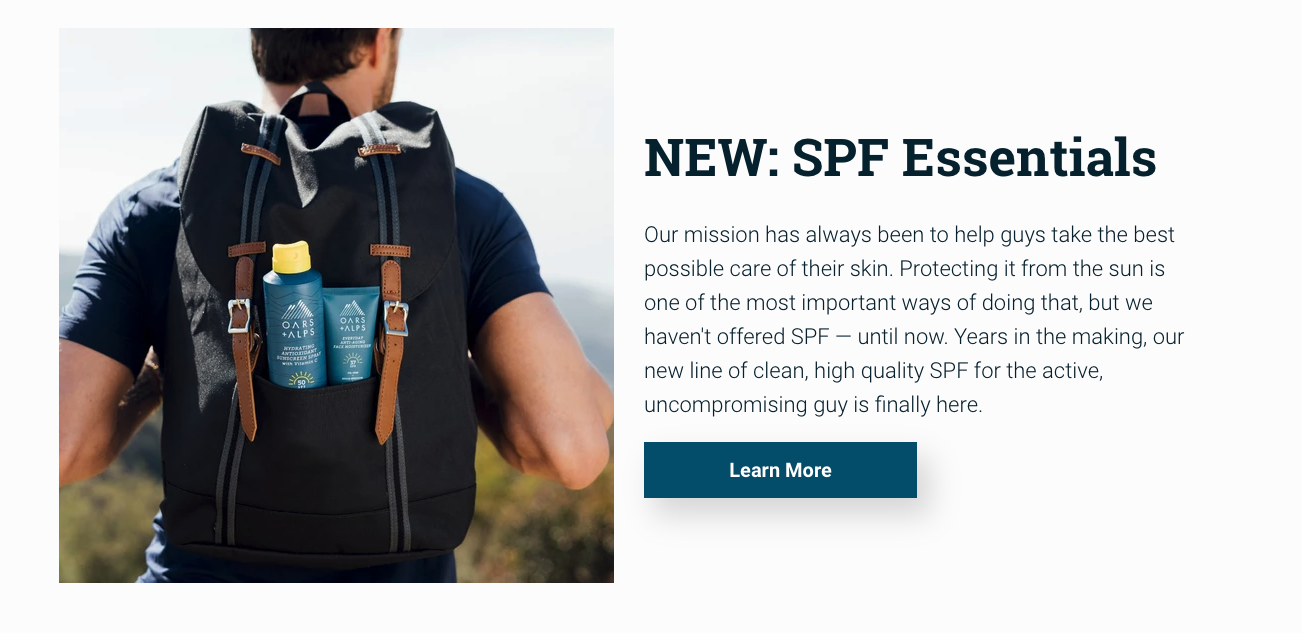
Oars + Alps captures a serious tone by putting their products and ethical values front and center in their copy. Doing this, they target an audience who wants the same things. As a result, their copy feels trustworthy yet aspirational.
Farmacy Beauty uses a similar tone:
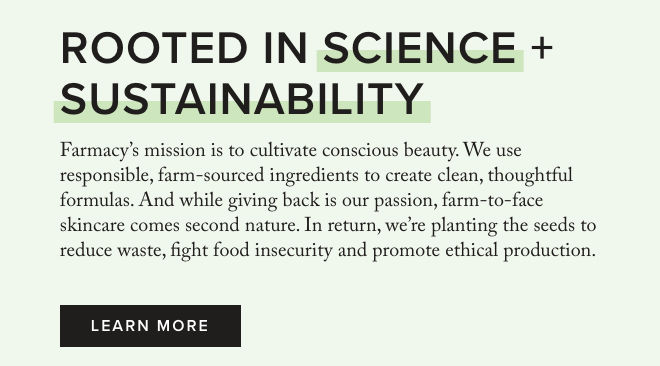
Farmacy emphasizes their values of thoughtfulness and responsibility throughout their copy. In this example, they highlight their clean ingredient story and their efforts toward sustainability.
This approach helps to demonstrate that they take their values and their products seriously, and it appeals to an audience with similar principles.
If you want to use a serious tone, first consider which qualities or values you most want the reader to understand about you. Then, use your writing to highlight those qualities in an honest way.
Enthusiastic vs. Matter-of-Fact Tone
The fourth and final dimension of tone in writing is your level of enthusiasm.
Enthusiastic writing tone
Enthusiastic writing is passionate and effusive about its subject. This tone is often used to generate excitement in the audience for the brand, product, service, or topic.
For example, here’s how apparel brand Life Is Good demonstrates their enthusiasm:

As a brand, Life Is Good is relentlessly positive. They use tons of exclamation points, bold colors and fonts, and emotional language ( “everything you love” and “fall adventures”) to express their excitement.
But you don’t need to pepper your copy with exclamation points to write with enthusiasm. Consider this example from Target:
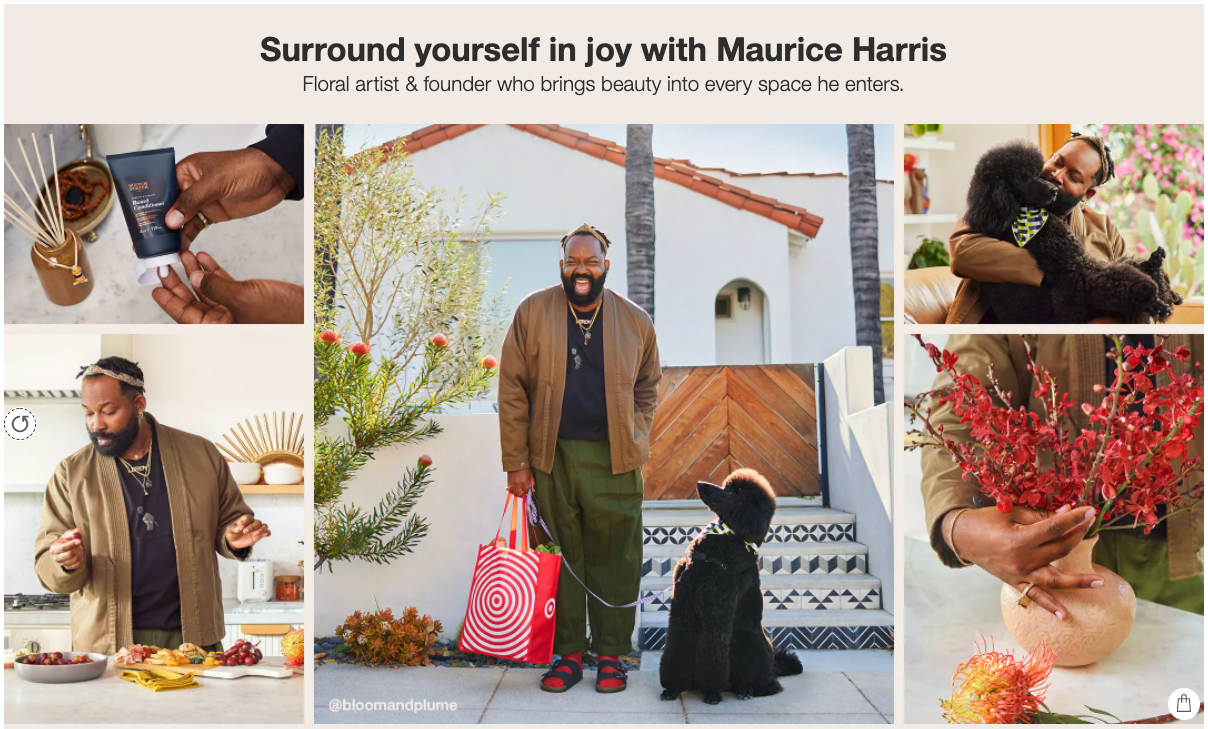
Target shows their enthusiasm through their word choice, using emotional phrases like “surround yourself in joy.” Overall, the way they describe this brand makes it clear they feel strongly about it.
This, combined with bright, energetic photography, creates an enthusiastic impression…even without a single exclamation point.
To write with enthusiasm, be true to yourself and your perspective. Don’t be afraid to use effusive phrasing to describe the things you’re most passionate about.
Matter-of-fact writing tone
But enthusiasm isn’t right for every brand. A matter-of-fact tone uses a practical, straight-to-business approach and avoids emotional language.
To illustrate, here’s an example from luxury menswear retailer Mr. Porter:

Mr. Porter’s website copy is sparse. It provides only the facts: that there are 104 new styles for sale that day, many from designer Brunello Cucinelli.
The design supports the copy by being equally straightforward and minimalistic. As a result, the page allows the products to speak for themselves.
Zara uses a similarly minimalistic approach.
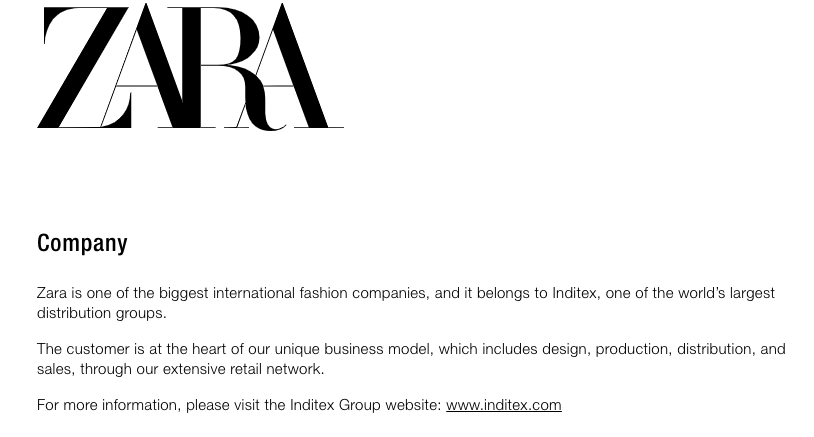
Zara’s company description is fairly sparse. It sticks to the facts, allowing the work to speak for itself. Their eCommerce pages have a similar approach, relying on clean design and photography, with only minimal copy.
With a matter-of-fact tone, you can let your product or service stand on its own, with minimal emotional language and subtle marketing. This tone can also be useful in contexts where a strict reliance on objective facts is important.
Would you like to learn more about creating effective content that ranks and engages the readers? Explore the Ultimate Content Writing Workbook for Content Marketers and Copywriters!
Mix and Match to Create the Perfect Tone for Your Writing
In writing, every tone exists in relation to these four dimensions. But that doesn’t mean these are your only eight options available. Instead, most writing combines two or more dimensions to create a unique tone for that piece of writing.
Here are a few examples of how you can combine tones and create new ones.
Friendly Tone (Informal + Respectful + Enthusiastic)
Friendly writing is inviting and relatable. You can write in a friendly way by using a more informal, conversational tone while remaining positive and respectful.
This feels familiar to readers, demonstrating your respect and sharing your enthusiasm with them.
Here’s an example of how BarkBox does it:
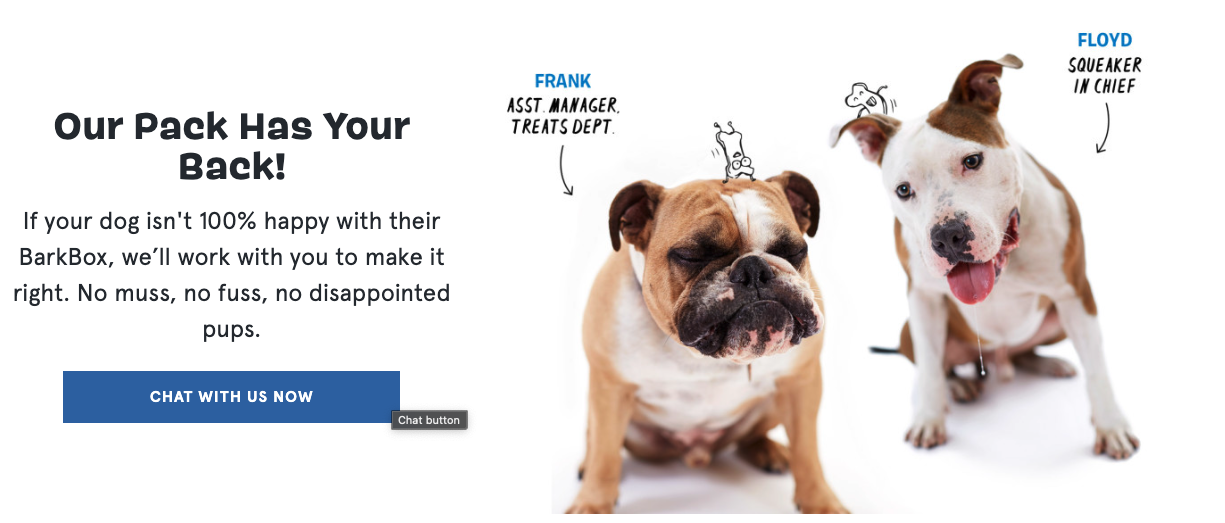
BarkBox uses fairly casual language and maintains an upbeat tone, even injecting some humor, despite an otherwise serious topic. This creates a welcoming atmosphere where readers can feel comfortable interacting with them.
Aspirational Tone (Formal + Enthusiastic)
An aspirational tone embodies the type of life the reader wishes they could be living.
As such, it’s often elevated in style, with effusive, emotional phrasing complimented by glamorous, clean designs.
Pottery Barn uses this tone in some of their copy:
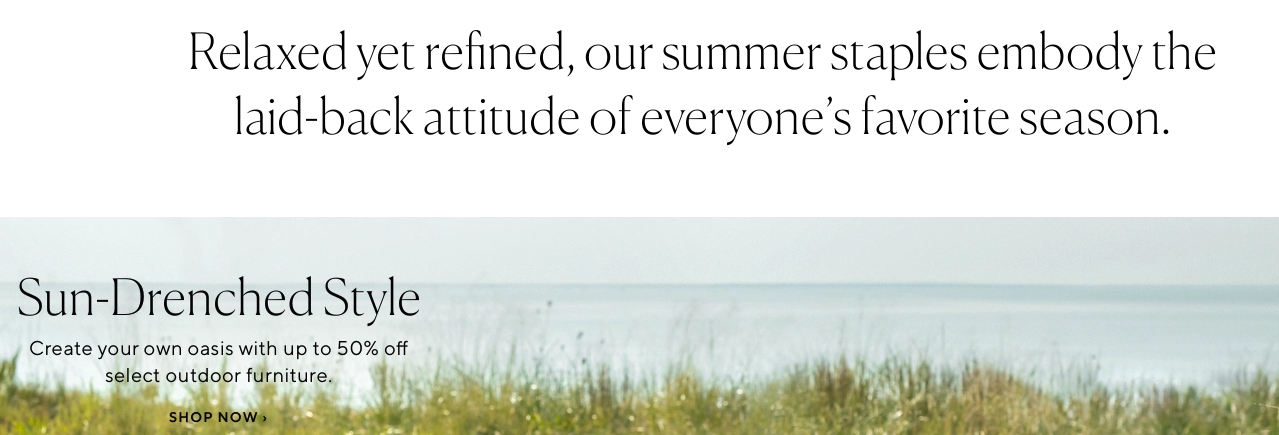
With phrases like “relaxed yet refined,” “laid-back,” and “sun-drenched,” Pottery Barn leans into emotional description. Then they back it up with clean colors and picturesque images.
Used together, this approach draws a clear picture of the life their customers could live by purchasing their products.
Adventurous Tone (Informal + Serious + Enthusiastic)
Adventurous writing shares passion with its readers and encourages them to live their bucket lists. To do this, the writing should treat these passions as seriously as their readers do, without compromising enthusiasm.
Here’s an example of how Red Bull uses it:
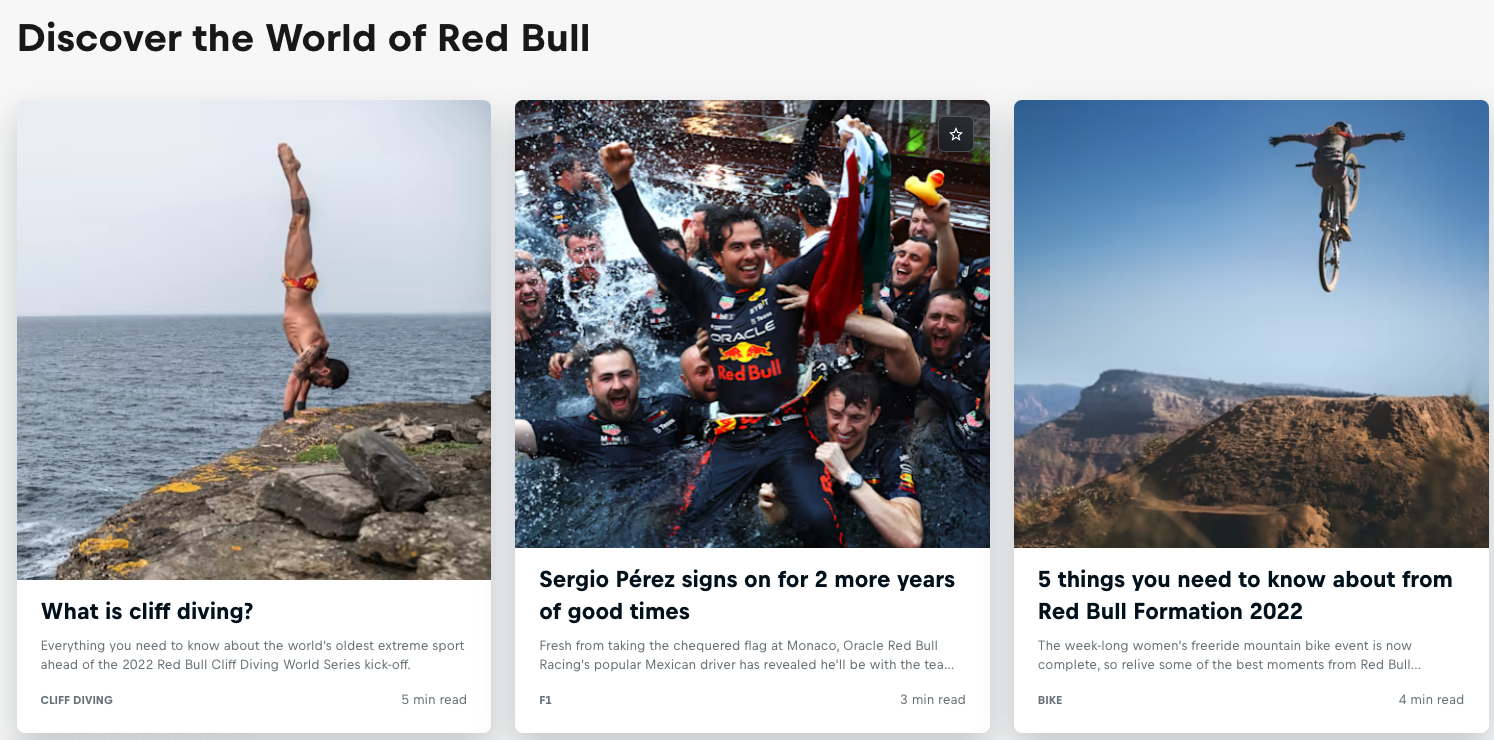
Red Bull shows off their intrepid spirit by creating content around adventure sports. They cover daring topics like cliff diving and mountain biking, and use motivational phrases like “discover the world” and “good times.”
Together, this displays Red Bull as adventurous in nature with exciting aspirations, just like their target audience.
Hardworking Tone (Formal + Serious + Enthusiastic)
A hardworking tone embodies grit and determination, showing readers that you’re willing to get your hands dirty to accomplish your goals.
This type of writing is focused and serious, yet emotional, using descriptive phrases that embody strength and motivation.
Ford uses this tone to describe their F-150:

In this example, Ford uses lots of phrases that describe hard work: “purpose-built,” “tough,” and “productive” are all used in the first sentence. Despite the serious, grounded tone, they still include vivid imagery.
Then, they close by connecting with the reader’s own work ethic.
Hone Your Tone and Empower Your Writing
Tone is an inescapable aspect of writing. By learning to harness it, you can empower your writing and connect with your audience more effectively.
The best way to hone your skills is to practice as much as possible. You can:
- Read your peers’ and competitors’ content
- Find writing that grabs you and analyze it
- Write tons of copy
- Always seek constructive feedback
